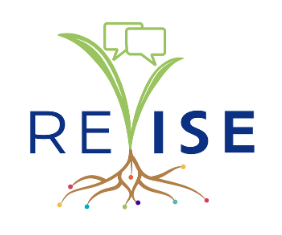September 17th, 2016 - August 31st, 2019 | PROJECT
Young people learn about science, technology, engineering, and math (STEM) in a variety of ways and from many sources, including school, the media, personal experiences, and friends and family. Yet STEM participation and identification by youth are not equal across social, economic, and cultural communities. This project will study a long-term, out-of-school program for high school-age youth, who are from groups under-represented in STEM academics and careers: girls, youth from low-income households, and youth of color. Located in the urban context of the Science Museum of Minnesota, the Kitty Andersen Youth Science Center (KAYSC) engages youth in applying culturally rich STEM content to work toward social justice and community building. Specifically, this project will examine how the learning practices of the KAYSC model support youth in identifying with, engaging in, and participating in STEM. Through studying the KAYSC's STEM Justice model, which centers youth as learners, teachers, and leaders who address critical community issues through STEM, this project will develop resources that informal science educators in a variety of contexts and programs can use to promote positive social change, equity, inclusion, and applied STEM learning.
The Science Museum of Minnesota will use design-based implementation research to study this model. This research will draw on and further the emerging theoretical framework of science capital. Science capital attempts to capture multiple aspects of science learning and application, including science knowledge, social and cultural resources, and science-related behaviors and practices. Empirically developing the theory of science capital has the potential to build concrete understanding of how to address inequalities in science participation. Four teams will work independently and collaboratively to do so: an adult research team, a high school youth research team, a practitioner team, and a co-design team composed of representatives from the other three teams. Research teams will collect data in the form of observations, semi-structured interviews, practitioner activity reports, artifacts, and the experience sampling method. Initial cycles of design will occur at the Science Museum of Minnesota as researchers and practitioners document, analyze, and iteratively design learning practices within the STEM Justice model. In the second half of the grant, the team will work with an external out-of-school time youth leadership site to implement the redesigned model. Participatory research and design methods involving both youth and adults can advance understanding of what makes out-of-school time STEM learning meaningful, relevant, and successful for marginalized youth and their communities. Grounded in culturally and socially relevant, community-based resources and programming, this project will study how leveraging STEM out-of-school time learning connected to social justice can broaden access to STEM as well as develop workforce, and leadership, and STEM skills by under-represented youth. The project also builds staff capacity for promoting equity and access in informal learning settings.
This project is being funded by the Advancing Informal STEM Learning (AISL) program, which seeks to advance new approaches to, and evidence-based understanding of, the design and development of STEM learning in informal environments.
Project Website(s)
(no project website provided)
Project Products
2019 AISL PI Meeting Poster: STEM Justice, renaming and reclaiming theory and methods
On the need for expanded guidance in navigating ethical learning research at science museums
STEM Justice Research Project: Youth Development Insights
Bringing the Why to Science Capital: STEM Capitxl and Informal Science Learning
Tips for Fostering Participatory Research in Informal Learning
Youth and Adult Needs in Equity-Oriented Informal STEM Education
Build a STEM Justice Toolkit
Embedded Research Practices: Practice as Process, Participatory Method, and Product in Informal Learning Research
Team Members
Shannon McManimon, Principal Investigator, Science Museum of MinnesotaZdanna King, Co-Principal Investigator, Science Museum of Minnesota
Joseph Adamji, Co-Principal Investigator, Science Museum of Minnesota
Aiyana Machado, Co-Principal Investigator, Science Museum of Minnesota
Choua Her, Co-Principal Investigator
Funders
Funding Source: NSF
Funding Program: AISL
Award Number: 1612782
Funding Amount: $490,320.00
Tags
Access and Inclusion: Asian Communities | Black | African American Communities | Ethnic | Racial | Hispanic | Latinx Communities | Immigrant Communities | Indigenous and Tribal Communities | Low Socioeconomic Status | Pacific Islander Communities | Urban | Women and Girls
Audience: Learning Researchers | Museum | ISE Professionals | Youth | Teen (up to 17)
Discipline: General STEM | History | policy | law
Resource Type: Project Descriptions
Environment Type: Afterschool Programs | Museum and Science Center Programs | Public Programs
